Artificial Whitewater courses are growing in number and popularity, offering paddling groups a community hub, somewhere to paddle when there’s no natural flows and for those who wish to train, consistency in conditions.
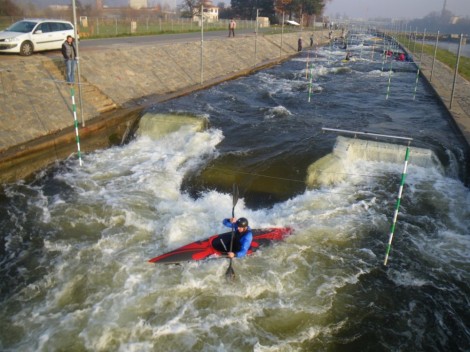
Eastern Europe has long been the envy of those elsewhere, with courses offering testing conditions and playing no small part in the competitive excellence that comes from these nations. But it’s not only the conditions created that have been interesting, the methods used have been innovative too like the tyre solution found at Troja in Prague.

But now, technology is moving on and developments introduced at new courses like the Lee Valley Olympic venue are being added to some Eastern European sites. The Rapid Blocs (which are made here at our Clevedon HQ) have recently been put in at the Troja course in Prague and under the guidance of course designer Vojtech Bares they have been testing the systems adjustability to great effect to get the feature they want.

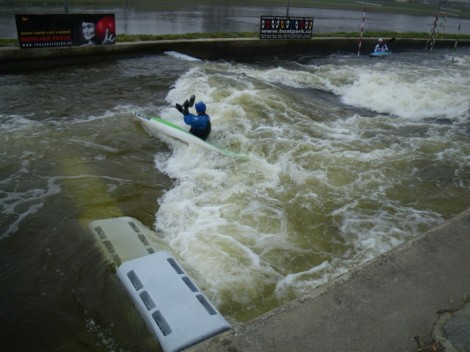

We’ll keep you posted on more spots where Rapid Blocs are being added and for regular updates check out the facebook page.
We have been quietly working together with the team from Engineering Paddler Designs (EPD) on an exciting project for a new system for adjustable features in artificial white water parks.

Bob Slee and Andy Laird testing the Rapid Bloc system at Teeside in July
The project came about after our technical Director Bob Slee attended a meeting about the re-development of the Holme Pierrpont white water course in Nottingham and met Andy Laird who along with ex World Slalom Champion and modern day artificial course pioneer Scott Shipley, designed the Rapid Blocs™ system.
Going something along the lines of ‘you’ve got the brain and we’ve got the brawn’ the project has moved fast with the EPD guys bringing the hydrodynamic design knowledge and us delivering the moulding expertise required to make the blocks.
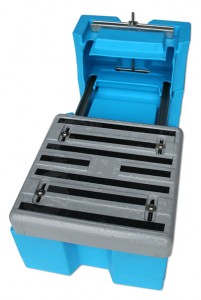
The Rapid Bloc attachment
What makes the system unique in its method of location to the riverbed via shaped metal rails, which run lengthways down the water channel. The blocks fasten to this, which allows them to be positioned at any angle and also to be stacked to create a groyne. The use of High Density Polyethylene (HDPE) and their low rectangular shape combined with a four point attachment make them solid when located but equally easy to manoeuvre for alterations to course design – something the EPD team recognised as an important design and manufacture requirement from experience with other systems.
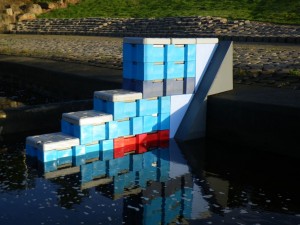
The new triangular blocks with the course empty...
This forms one of a number of interesting departures for us here at Palm in the use of our rotomoulding oven for non-kayak related manufacture. We have already managed to re-cycle over 90% of our waste from boat manufacture, but schemes like this allow us to bring the second-generation use of the materials back into development of the sport, which is a real focus for us.
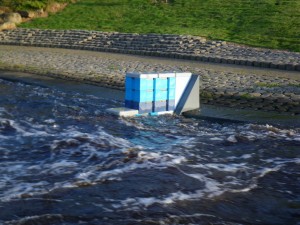
...and full
The rapid bloc system was launched at the recent European Slalom championships in Nottingham and showcased to competitors, coaches and officials from around the world including members of the International Olympic Delivery Committee responsible for the 2012 Olympic course in Lee Valley Park. Production units have now been fitted to the Teeside whitewater course which will be the first course to use this new system.
We’ll keep you posted on developments or, for more info check out the Rapid Bloc web site.
Paul Robertson
















